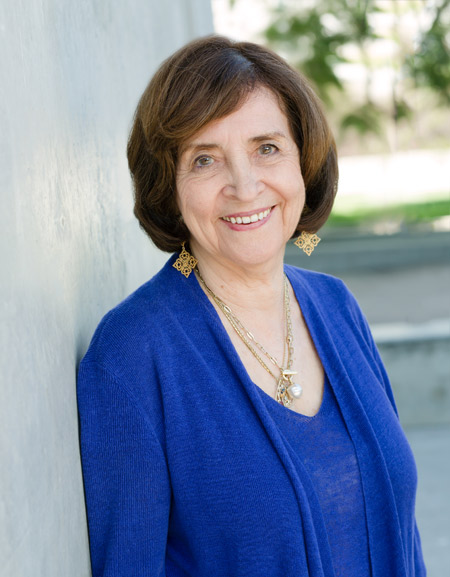Educators


Director of the Educators Network for TDLC, UC San Diego
Where were you born and raised?
I was born in Albuquerque, New Mexico and lived there until late elementary school. My father took a job in Mexico because he was Spanish-speaking. They needed American Spanish- speakers to educate Mexican villagers on the importance of vaccinations to eradicate cattle hoof and mouth disease. After three years in Mexico, we moved to San Diego.
What is the one piece of advice you would give your younger self?
To make connections wherever there was an opportunity.
Describe the moment when you knew you had to go into education.
I come from a family of teachers: grandmother, sister, aunt. When I graduated from college and was still working at Mercy Hospital, as I had done all through college, I was offered a job in a Catholic girls’ high school by the hospital priest. I loved it so much, I went to school for another year to earn my credential to teach in a public school.
Describe an aha moment you’ve had as a result of leading DEAP.
I realized how important it is to educate teachers on the science of learning. There are so many neuromyths, and teachers are so hungry to understand how the brain learns, they accepted these myths. I knew we were on the right track, bringing teachers and scientists together to erase these ideas and understand how each could help translate ideas from research to the classroom.
In the scientists’ case, it was understanding the workings of a classroom and the limitations of directly translating lab to classroom. By working and planning together, those exchanges became more possible. In the teachers’ case, it was understanding research more formally and setting in motion ideas for classroom research based on what they learned from presentations and discussions with scientists. Both involved collaboration and trust, which developed over the past nine years.
What is one significant advance TDLC research has brought to the science of learning?
Pashler’s research on spacing effects and the importance of frequent testing throughout the learning cycle to increase retention. Moser’s program in Colorado, which determined how timed testing and review increased language learning; a science teacher’s research on using spacing to help students learn important tenets in middle school; a high school teacher’s research on changing climate change perspectives by using spaced testing.
What do you hope to accomplish in the next seven years in the Science of Learning Research Center?
I truly believe our model of bringing teachers and neuroscience researchers together is critical to engage teachers in the science of learning and scientists in the workings of K-12 education. I envision a national faculty of teachers, on each of the campuses associated with our center, forming DEAP panels and meeting regularly with neuro and learning scientists to advance interdisciplinary research. It would set up incentives for scientists to work with educators and for teachers to join a community of learners and become resources for others in their schools and throughout the country.
We have established a model at TDLC that should be replicated in many universities. As so many of our educators have said, ours was a unique kind of professional development that impacted their teaching in many ways and their students’ learning in the process. Teachers all over our nation deserve to have this unique approach to professional development because it taps into how teachers learn: personalization, demonstration, practice, collaboration, exposure to others outside our field and emotional connections to learning.
What is your favorite TDLC value?
I believe the greatest value is collaboration. The center’s network of networks is a prime example of how this unique value has played out in so many of the center’s accomplishments.